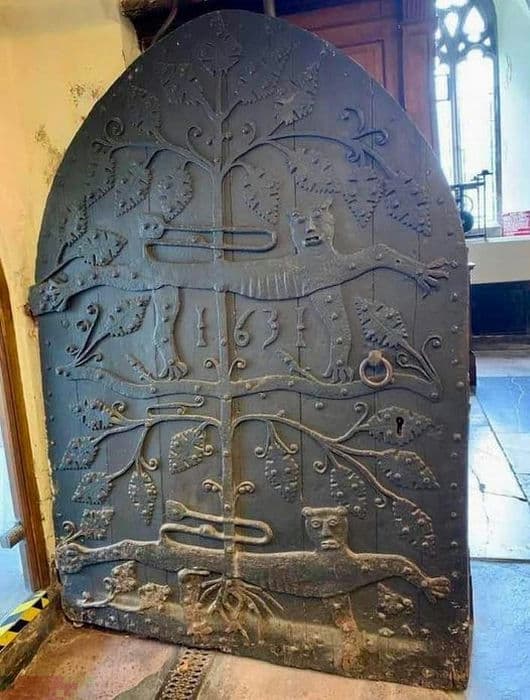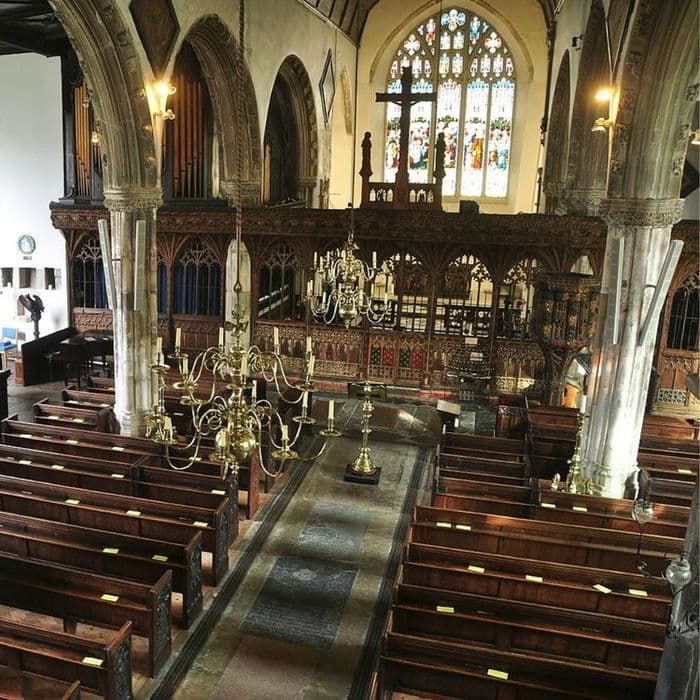Nestled in the picturesque town of Dartmouth, St Saviour’s Church stands as a beacon of history and architectural splendor. Dating back to the middle ages, this remarkable church boasts a wealth of treasures, including a magnificent door adorned with medieval ironwork and a Biblical ‘Tree of Life.’ With its rich heritage and timeless charm, St Saviour’s Church is a must-visit destination for history enthusiasts and spiritual seekers alike.

Why I Came to Visit:
Intrigued by tales of St Saviour’s Church’s medieval treasures and its significance in Dartmouth’s history, I embarked on a journey to explore this architectural gem. Here are five highlights not to be missed when visiting St Saviour’s Church:
- Medieval Ironwork: Marvel at the intricately decorated door, carbon-dated to 1361, featuring stunning examples of medieval ironwork, including a Biblical ‘Tree of Life’ and symbolic leopards.
- Historic Significance: Delve into the history of St Saviour’s Church, constructed in the middle ages and renowned for its association with notable figures such as John Hawley, believed to be the inspiration for Chaucer’s ‘Shipman’ in the Canterbury Tales.
- Restoration Efforts: Learn about the recent restoration efforts undertaken to preserve the church’s architectural integrity, including the cleaning and restoration of the high altar, ceiling, and gallery, ensuring its timeless beauty for future generations.
- Gallery of Coats of Arms: Explore the impressive gallery adorned with coats of arms, including those of John Hawley II, John Hawkins, and Sir Francis Drake, offering a glimpse into Dartmouth’s maritime heritage and illustrious past.
- Armada Chest: Admire the 16th-century Armada Chest, a tangible link to Dartmouth’s maritime history, used by naval officers during the Spanish Armada, featuring an intricate iron locking system and fascinating historical significance.




FAQs about St Saviour’s Church:
- What is the significance of the Tree of Life depicted on the church door?
The Tree of Life symbolizes eternal life and immortality, rooted in Biblical narratives such as the Garden of Eden. Its depiction on the church door reflects the medieval symbolism prevalent during the time of its creation. - When was St Saviour’s Church constructed?
Although permission was granted in 1286, St Saviour’s Church was not built until 1372, making it a remarkable example of medieval architecture and craftsmanship. - What restoration efforts have been undertaken at St Saviour’s Church?
Recent restoration work has focused on preserving the church’s architectural elements, including the high altar, ceiling, and gallery, ensuring that its historic beauty remains intact for future generations to appreciate. - What historical figures are associated with St Saviour’s Church?
St Saviour’s Church is linked to notable individuals such as John Hawley, believed to be the inspiration for Chaucer’s ‘Shipman,’ and maritime heroes like John Hawkins and Sir Francis Drake, whose coats of arms adorn the church’s gallery. - Where is St Saviour’s Church located, and what are its nearby attractions?
St Saviour’s Church is situated on Anzac Street, a short distance from Dartmouth Museum and the bustling harbor. Visitors can explore Dartmouth’s charming waterfront, embark on scenic walks along the South West Coast Path, or visit the iconic Dartmouth Castle overlooking the estuary.





St Saviour’s Church stands as a testament to Dartmouth’s rich history and architectural heritage, offering visitors a captivating journey through time and tradition. With its medieval treasures, fascinating symbolism, and recent restoration efforts, the church remains a cherished landmark in the heart of Dartmouth, inviting travelers to discover its timeless charm and spiritual significance.

